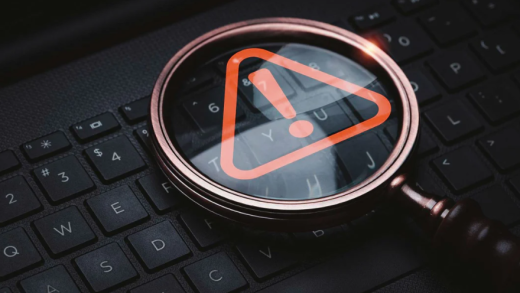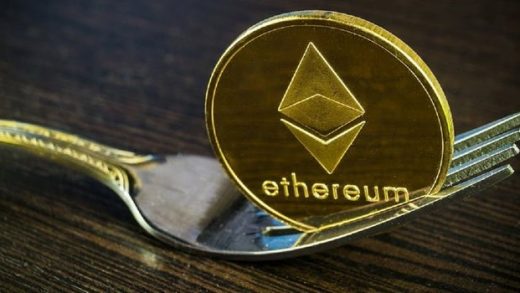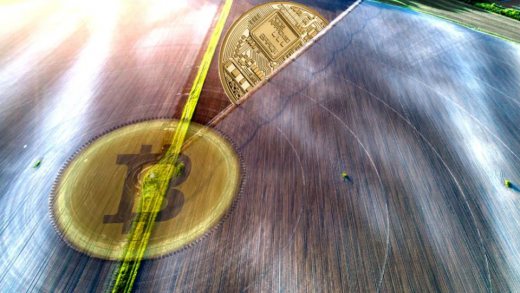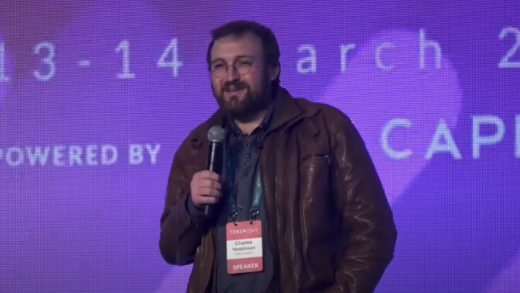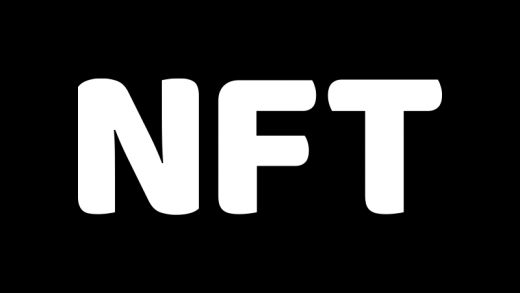
STEPHEN BRASHEAR/GETTY IMAGES
Microsoft is taking its secret platform for creating tokens similar to bitcoin out for a test drive. The software giant, which was among the first to accept bitcoin for payment, has created a mint for issuing a wide range of crypto assets. Several companies, including a video game outfit and a virtual reality platform, have already used the mint to create a number of experimental assets while others like General Electric are waiting in the rafters to create their own. As of today anyone can apply to preview the technology.
Called Azure Blockchain Tokens, the crypto-assets mint lets enterprises, or anyone really, design, issue and manage a wide range of assets, which like bitcoin, can be proved to exist only in one place at a time, making them much more difficult to forge and much easier to audit. Whereas bitcoin is comparable to fungible assets like money or gold, Azure Blockchain Tokens will come in many flavors, including non-fungible bonds, documents and tickets.
The companies using the technology are mostly relying on a permissioned version of the ethereum blockchain that uses Microsoft’s Azure cloud computing to reach a consensus on transactions. But in the future developers will be able to use Azure Blockchain Tokens on the public ethereum blockchain or even at distributed ledgers created by some of Microsoft’s own competitors.
Since the benefits of using a shared, distributed ledger of transactions are relative to the size of the network, Microsoft designed Azure Blockchain Tokens to comply with a new taxonomy framework describing the tokens, developed by Digital Asset, IBM, JP Morgan, R3 and others, meaning that while the distributed ledgers that power the future interconnected network of tokens will be different, the genetic makeup of the tokens will be similar enough to be exchanged.
As companies like JPMorgan have already minted similar tokens and Facebook is working with a group of companies as diverse as Uber, Spotify and Vodaphone, Microsoft’s work, using the same standard as the other participating blockchain developers, could pave the way for a veritable explosion of similar enterprise-grade tokens that work together as easily as if they were a single company’s accounting system.
“We’re bringing the kind of efficiency you see in Amazon Fresh and Amazon Now, everywhere,” says Microsoft principal architect Marley Gray, describing Amazon’s services for delivering some products in minutes. “Because you’re closing the gap between parties collaborating together and working through business processes that will make everything from delivery services and getting meetings and appointments much easier and automatable.”
It is important to note that most Azure Blockchain Tokens are very different from bitcoin—which gets its value on an open market—in spite of relying on some similar technology. For example, the emoney token based on the Token Taxonomy Framework (TTF), also released today, will likely only have value based on its underlying assets, similar to the libra cryptocurrency being developed by Facebook, according to Gray, who also chairs the Token Taxonomy Initiative that created the framework. TTF standards for insurance documents and diplomas, on the other hand, are tokenized only in the sense that the ledger on which they move proves that the contract or asset is only in one place at a time, and won’t likely have value that adjusts on an open market or is based on underlying assets.
For example, a bill of lading used by a manufacturer to ship products on a container ship can exist only in one place at a time because holding the paperwork comes with certain responsibilities. Also, each bill needs to be insured, and traditionally the physical lading and insurance documents are stapled together and manually passed from one counterparty to another, at each step becoming increasingly susceptible to fraud and loss.
Among the earliest partners with Microsoft to help develop the Azure Blockchain Tokens is Mythical Games, based in Los Angeles, using blockchain to reimagine video game economies. Last year, Mythical’s founders, from Activision and Zynga, raised $16 million from hedge-funder Mike Novogratz’s Galaxy Digital, and others. Similar to bitcoin, Mythical is using blockchain to let game developers prove beyond the shadow of a doubt that their game currency is scarce, if they so wish, or that digital objects like special weapons, a magical power, or a character’s virtual wardrobe aren’t being copy-and-pasted ad nauseum. By limiting supply, Mythical’s founders believe they can make it easier for digital objects to be traded in virtual worlds, denominated in real-world value.
If such virtual markets seem far-fetched, to a lesser degree, they already exist—just without the blockchain. Earlier this year, an avatar controlled by and representing EDM producer and Forbes 30 Under 30 member Marshmello performed in front of 10 million other avatars from around the world on a virtual stage in Epic Games’ massively multiplayer online (MMO) video game Fortnite. Similar to how a T-shirt might be purchased at a real-world event to prove the attendee was there, “skins” or costumes that make a player’s avatar look like the DJ, were available to virtual concertgoers for 1,500 Fortnite v-bucks, or about $15. So far, a total of 37 of those skins have sold on secondary markets at an average price of $427.86, according to eBay’s product comparison site Terapeak. That’s an increase of 2,746%.
While the total size of such secondary markets is hard to nail down, a study commissioned by the Worldwide Asset Exchange, another blockchain startup, estimated it could be as high as $50 billion. One site that connects traders online, PlayerAuctions.com, claims to have 515,000 monthly active users trading credentials that give them access to video game currency, player accounts, increased player power and the video games themselves. In 2017, the company conducted 800,000 transactions, according to its site, charging between 5% and 12% the value of successful deals, plus fees.
To give an idea of the potential benefits of moving any number of assets to a blockchain, Mythical Games hopes its digital goods, or dGoods, will enable three new business opportunities. First, unlike current secondary markets, or what Mythical cofounder Rudy Koch calls gray markets, which exist outside the game and frequently require players to sell their entire login-credentials, these objects can be sold within the game and move freely from player to player. Second, unlike old-fashioned Super Mario Brothers coins that can be created or erased as easily as passing a level or hitting reset on the console, respectively, these digital objects will have provable scarcity. Third, digital objects tracked on a blockchain could be coded with unbreakable smart contracts that move with the object and pay a predefined dividend to the object creators, a sort of digital object royalty to software developers.
“We know already that players are enterprising. They already want to do this,” says Koch, who is also vice president of Mythical’s marketplace services. “So now, providing a safe place for them to do that, I think it will only get bigger. We’ll see this segment of entrepreneur-type players come out and really dig into this kind of economy.” Microsoft’s Gray added: “You’ll see an explosion of secondary markets. We can create secondary markets from anything.”
While Mythical Games is a good example of how tokenization works, other early users of Microsoft’s blockchain tokens mint include Sacramento, California-based CEEK Virtual reality, which is creating a token that verifies streaming content viewership on the blockchain; London-based Adhara, which is creating an emoney service; and an unspecified token being created by GE Aviation, the aircraft engine parts division of General Electric. Global investment in blockchain is expected to reach $15.9 billion by 2023, according to International Data Corporation, a market intelligence firm.
The key to Microsoft’s blockchain business model lies in a crucial difference between how public blockchains and permissioned blockchains agree on which transactions are valid. Public blockchains like bitcoin and ethereum are programmed to automatically reward users with cryptocurrency for contributing computing power to audit the blockchains, making them theoretically less centralized and more suitable for counterparties who either don’t know or don’t trust each other. Permissioned blockchains, on the other hand, are audited by centralized services supported by cloud computing like Azure and others, and while being more suitable for counterparties that trust each other, look much more like centralized databases with at least one expensive middleman still required: Microsoft.
The Seattle-based software giant charges $0.075 per hour per blockchain node and an additional $0.05 per gigabyte of cloud storage. In 2018 Microsoft generated $32.2 billion in cloud computing revenue. Though the company doesn’t break down how much of that is from blockchain transactions, it is likely a very small percentage. Instead, Microsoft managing director Matthew Kerner talks of what he calls the “halo effect” of having so many data systems and enterprise resource planning systems integrated with their cloud technology.
“Having that on our cloud encourages the development of other apps, data solutions and line-of-business capabilities on the cloud, which we will monetize,” says Kerner. “And that’s where we really seek to benefit from blockchain on Azure.” Microsoft’s largest cloud computing competitor and fellow Forbes Blockchain 50 member, Amazon, also offers blockchain support.
At the core of what makes Azure Blockchain Tokens possible is the open-source Token Taxonomy Framework, available on the GitHub code repository as of today. The framework started in Microsoft as patterns emerged in the way that certain tokens on the ethereum blockchain were being created. Gray brought the different token types to the Enterprise Ethereum Alliance and asked them to help standardize the way big companies describe the assets they create on ethereum.
It didn’t take long, however, to realize the potential benefits of creating token standards that transcended any single blockchain, and the Token Taxonomy Initiative was launched in April. Initiative members also include IBM, which created Hyperledger Fabric; R3, which created Corda; Digital Asset, creators of the Digital Asset Modelling Language (DAML); and public ethereum startup incubator, ConsenSys. The framework consists of 14 different kinds of tokens: bonds, documents, emoney, fab tokens, inventory, issuance, licenses/diplomas, logs, loyalty points, original artwork, penalties, reputation, rewards and reserved tickets.
Enterprise Ethereum Alliance executive director Ron Resnick imagines a world where enterprises and governments issue unique, un-forgeable assets in an interconnected mesh of blockchains complying with the same token standards. While Azure Blockchain Tokens is initially aligned with Microsoft’s permissioned version of the ethereum blockchain, the platform can be “pointed” to any blockchain, including public ledgers powered by cryptocurrency.
As part of the TTF’s continued evolution, the Azure Marketplace today announced it is providing a template for open-source Hyperledger Fabric, while bank-backed R3, which launched a competing version of its own software developer kit (SDK) for building tokens in July, joins Ethereum as the second distributed ledger to receive support from Microsoft’s Azure blockchain service. “The TTF is like music,” says Enterprise Ethereum Alliance executive director, Ron Resnick. “Fourteen notes and rules to compose, so regardless of the instrument built and regardless of the style and location of where the music is created, the composition works for everyone.”


